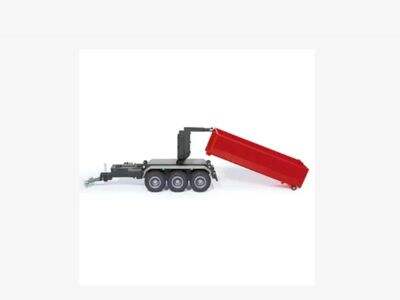If hydraulic and pneumatic cylinders are introduced to you, what is your response? Both are very crucial parts in the machine that assist in movement and functioning. Though they might appear almost same, there are considerable variations in the context of both these tools. So lets see what makes them special. Huachen is here to help you.

In which a section named the piston is pushed via a liquid (usually oil) There is a heavy object called load that the piston lifts or moves when it moves up and down. Pneumatic cylinders will operate by compressed air pressure which directly push the piston but not liquid force, on the other hand. This also is helpful for moving a load. Hence, liquid in the case of hydraulic cylinders and air for pneumatic IBCs respectively.
How Do They Perform?
To begin with how they operate, hydraulic cylinders and hydraulic power pack are a very strong and powerful way of getting the job done. As a result, they are more sturdy and have higher levels of the force that is required to perform heavy-duty tasks. These types of bearings are commonly used in construction equipment because they can handle lots of heavy lifting. Pneumatic cylinders, on the other hand are not as powerful as hydraulic capability but has certain advantages. These are much faster and move lighter materials across quickly. It is perfect for applications that require high speed, such as automated systems and assembly lines.
Efficiency of the Cylinders
Hydraulic cylinders are considered to be more economical as less liquid is needed to do the same work with pneumatic cylinder. This allows them to work for longer periods of time without having to refill their juice. By contrast, pneumatic cylinders need a greater volume of airflow to operate reliably which can mean they are not as cost-effective in the long run. Therefore, if you require a complete hindrance performance cylinder, it is better to go for hydraulic cylinders and hydraulic power unit.
Maintenance and Cost
Everything else aside, maintenance and costs need to be thought about next. Pneumatic cylinder compared to hydraulic cylinder discussion pointsMethodInfo: Wikipedia-creative-commonsInvariably, pneumatic cylinders require less maintenance than a hydraulic cylinder and electric hydraulic power pack. This is because these fluids must be inspected and replaced often, so that they operate as correctly. If the fluid is low or burned it can cause problems. Gas cylinders, however, require less maintenance since they are not powered by the liquid. This, in effect, makes them easier to look after. Regarding cost, hydraulic cylinders will usually be more expensive than pneumatics. But they are generally a good investment as they are able to bear heavier loads and is more hard wearing on a long run.
Installation and Operation
Installation and Operation Fitting hydraulic and pneumatic cylinders: the tricky part The disadvantage of pneumatic cylinders is generally that they are easier to install. Because they are smaller, and demand less liquid to set up. There are also some variations when it comes to running these cylinders. They require a large amount of his resistance to move, so they often operate slowly. By contrast, pneumatic cylinders have lower pressure requirements and can move faster. That difference may, or may not, matter depending on what you're asking the cylinder to do.
When to Use Each Cylinder
Wiuld you like to use such type of cylinder in you project? It all just depends on what you need to do. Hydraulic cylinders are needed to perform lifting and pushing very heavy loads, like it is mostly used in heavy-duty. You can frequently find them in construction machines, agricultural equipment and manufacturing systems where strength is needed. Conversely, pneumatic cylinders are more appropriate for lighter tasks and require fast linear movements (like opening/closing doors or clamps). They are widely used in robotics, assembly lines and packaging equipment.

 EN
EN
 AR
AR
 BG
BG
 HR
HR
 CS
CS
 DA
DA
 NL
NL
 FI
FI
 FR
FR
 DE
DE
 EL
EL
 HI
HI
 IT
IT
 JA
JA
 KO
KO
 NO
NO
 PL
PL
 PT
PT
 RO
RO
 RU
RU
 ES
ES
 SV
SV
 CA
CA
 TL
TL
 IW
IW
 ID
ID
 LV
LV
 LT
LT
 SR
SR
 SK
SK
 UK
UK
 VI
VI
 HU
HU
 TH
TH
 TR
TR
 FA
FA
 MS
MS
 GA
GA
 CY
CY
 KA
KA


